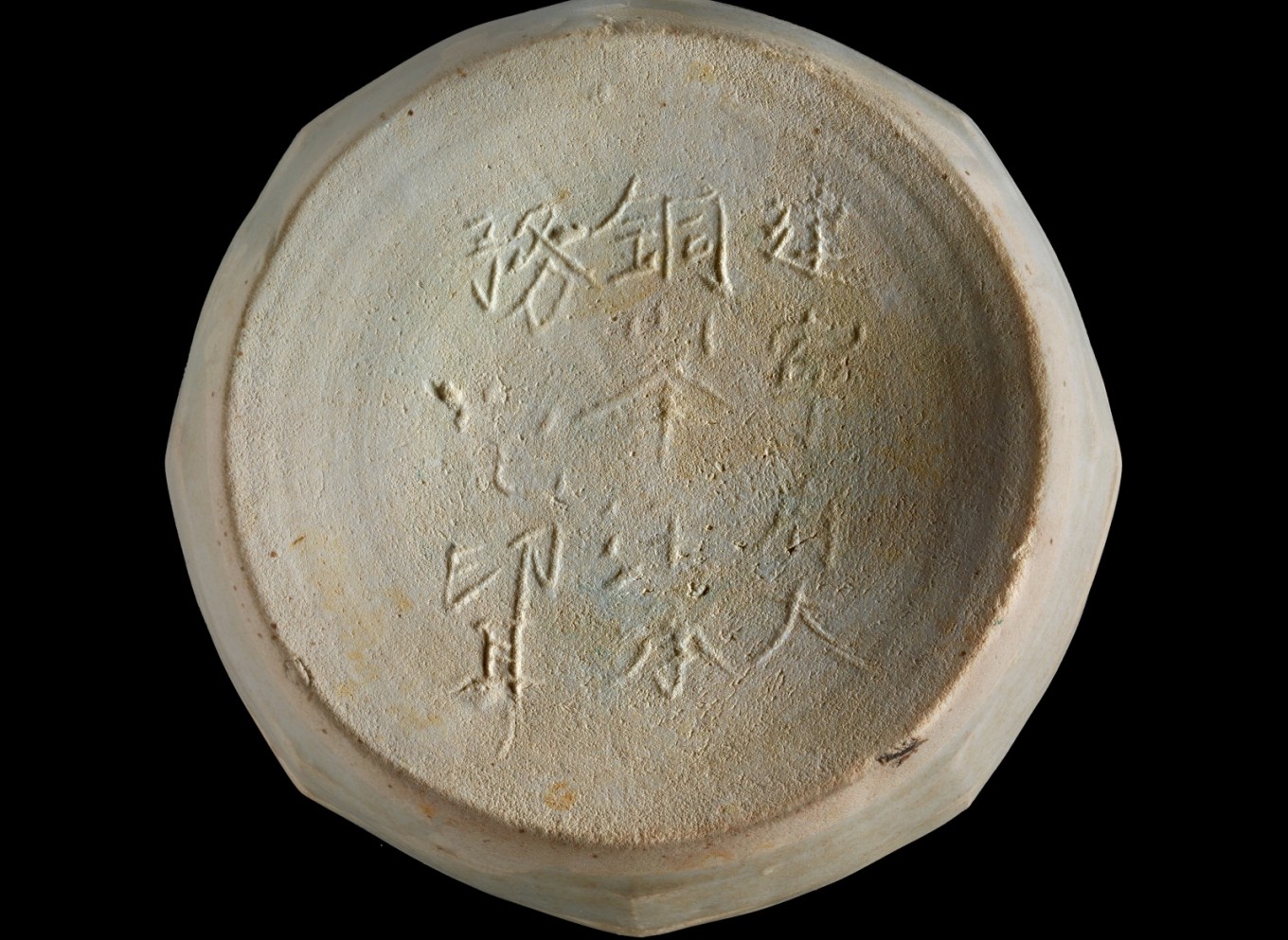Popular Reads
Top Results
Can't find what you're looking for?
View all search resultsPopular Reads
Top Results
Can't find what you're looking for?
View all search results'Made in China' label sheds light on old Java Sea shipwreck
A fresh examination of Chinese ceramics and other cargo from an important Java Sea shipwreck has led researchers to conclude that the vessel sank a century earlier than previously thought.
Change text size
Gift Premium Articles
to Anyone
 Ceramic box base with a Chinese inscription that mentions a place, Jianning Fu, which dates from AD 1162 to 1278, from the Java Sea Shipwreck, which was discovered in the 1980s west of Indonesia's island of Sumatra, is shown in an image released by the Field Museum in Chicago, Illinois, U.S., May 17, 2018. (Courtesy Gedi Jakovickas/The Field Museum via Reuters/File)
Ceramic box base with a Chinese inscription that mentions a place, Jianning Fu, which dates from AD 1162 to 1278, from the Java Sea Shipwreck, which was discovered in the 1980s west of Indonesia's island of Sumatra, is shown in an image released by the Field Museum in Chicago, Illinois, U.S., May 17, 2018. (Courtesy Gedi Jakovickas/The Field Museum via Reuters/File)
A
fresh examination of Chinese ceramics and other cargo from an important Java Sea shipwreck has led researchers to conclude that the vessel sank a century earlier than previously thought, providing insight into Asia’s maritime trade more than 800 years ago.
Inscriptions akin to a “Made in China” label found on two of the thousands of recovered ceramics provided crucial evidence that the 92-foot (28-meter) long wooden ship went down, perhaps in a storm, in the second half of the 12th century, not the mid- to late 13th century, researchers said on Thursday.
The shipwreck was discovered in the 1980s west of Indonesia’s island of Sumatra. Florida-based salvage company Pacific Sea Resources later worked at the site and donated half of the artifacts it recovered, more than 7,500 items, to the Field Museum in Chicago and the rest to Indonesia’s government in the 1990s.
“The Java Sea Shipwreck is informative in many ways. It demonstrates not only the scale of maritime trade at the time but also its complexity,” said Field Museum archaeologist Lisa Niziolek, lead author of the research published in the Journal of Archaeological Science: Reports.
Read also: Made-in-China jet takes maiden flight
The ship, likely built in Indonesia, carried nearly 200 tons of wrought iron bars and cast iron woks and cooking pans, as well as about 100,000 pieces of ceramic from China. The cargo also included resin perhaps from India, elephant tusks possibly from East Africa and a collection of ritual vessels probably from Thailand. The ship likely was headed to Indonesia’s island Java from China.
The name of a specific Chinese locale, Jianning Fu, on the two ceramics inscriptions permitted a more accurate shipwreck time estimate. After the 1270s invasion of the Mongols that toppled the Song dynasty, that area was reclassified as Jianning Lu. The Jianning Fu reference meant the sinking may have occurred as early as 1162, Niziolek said.
A carbon-dating technique used on ivory and resin supported the idea that the shipwreck was older than previously thought, Field Museum archaeologist Gary Feinman said.
The earlier date shifted the shipwreck’s historical context away from the period right before or after the Mongols established China’s Yuan dynasty in the 1270s to the earlier part of the Southern Song dynasty.
This dynasty encouraged Chinese traders to go abroad instead of relying on foreign missions traveling to China, Niziolek said. This was also a time of heightened competition between Southeast Asia’s maritime societies, Niziolek added.










